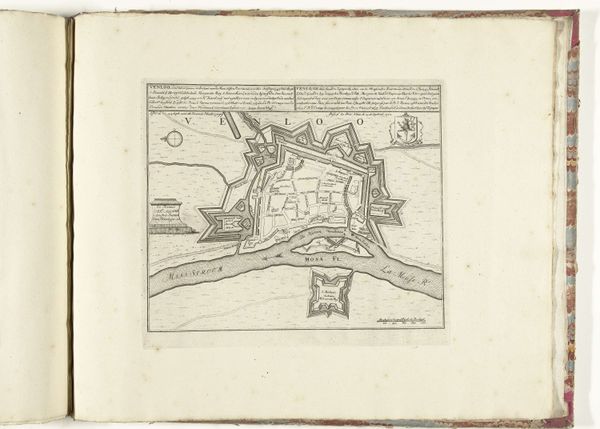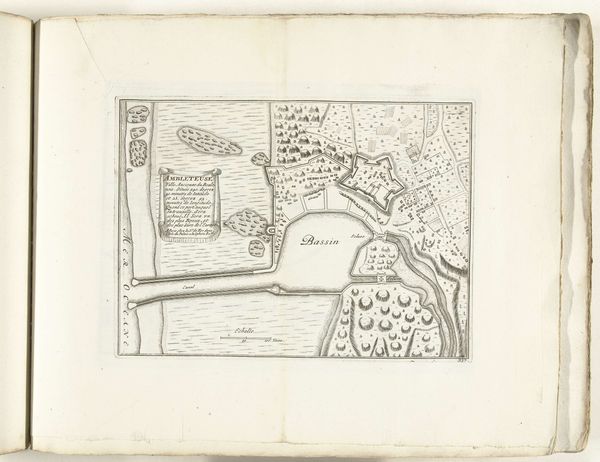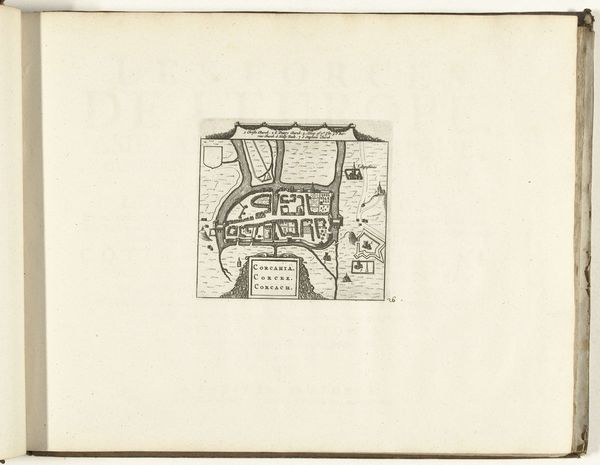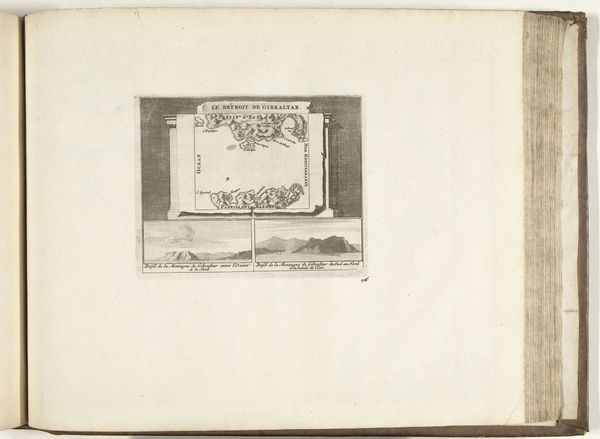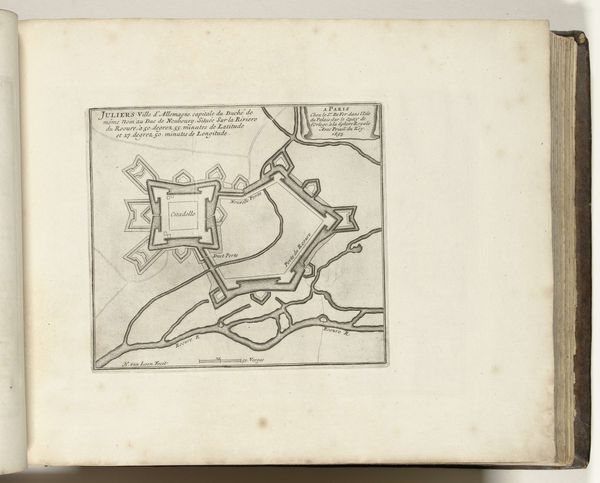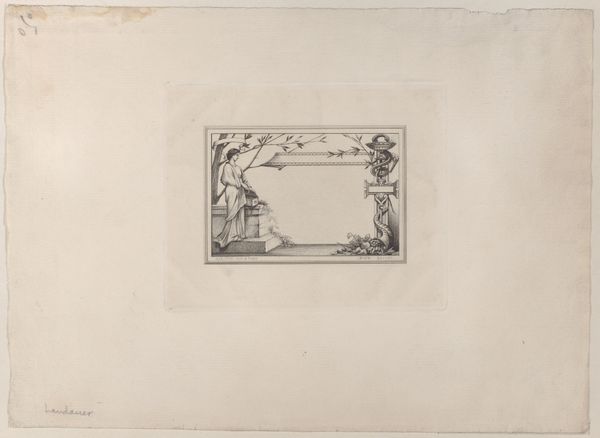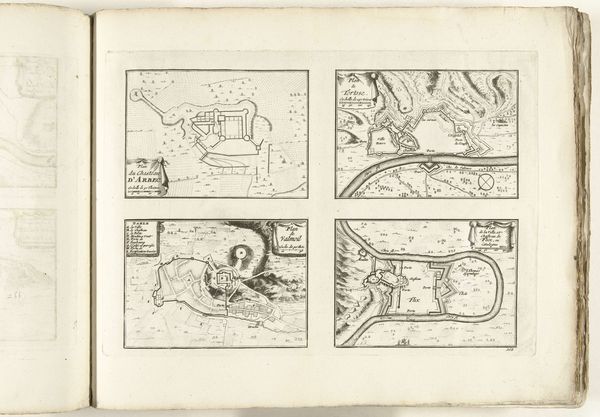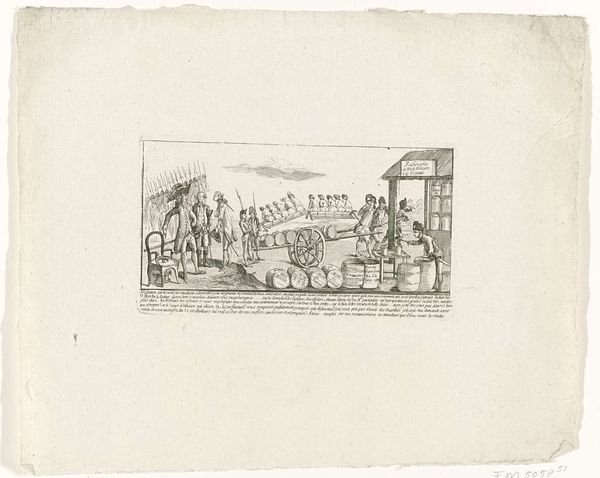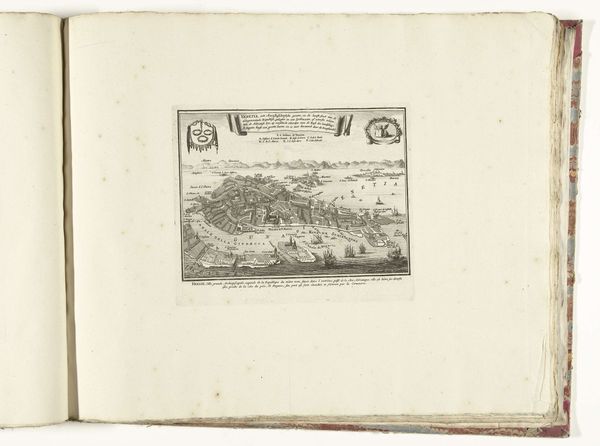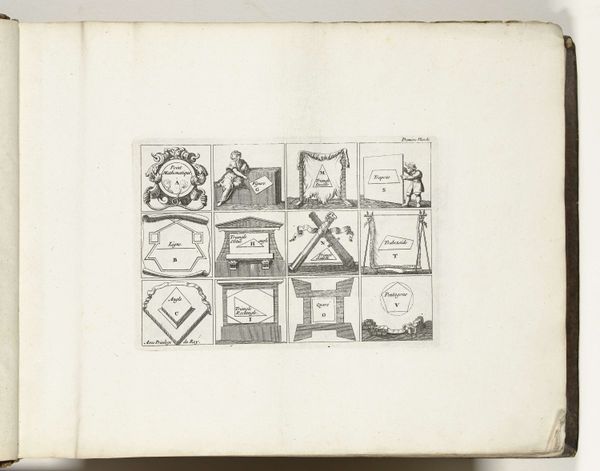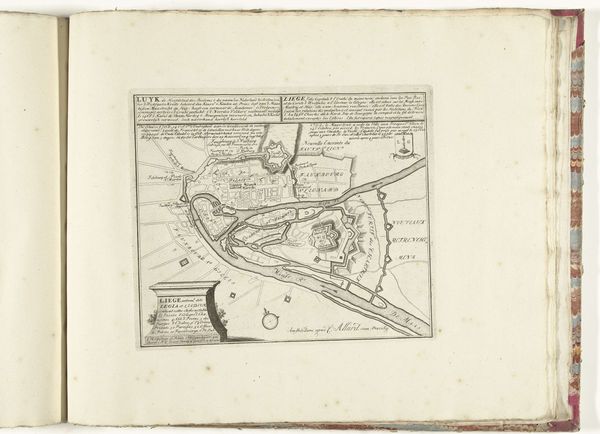
drawing, print, paper, ink, engraving
#
drawing
#
baroque
# print
#
pen sketch
#
landscape
#
paper
#
ink
#
cityscape
#
watercolour illustration
#
engraving
Dimensions: height 248 mm, width 281 mm
Copyright: Rijks Museum: Open Domain
Curator: Before us is a detailed "Plattegrond van Venlo," or Plan of Venlo, dating roughly from 1702 to 1714. It’s attributed to Abraham Allard and renders a Baroque-era vision of this strategic city through precise engravings. Editor: Ah, look at that! It's so precisely rendered, almost unsettlingly calm for a city, right? Makes me think of Wes Anderson somehow... everything in its place, even potential conflict. Curator: Absolutely. What is so striking here is how it visualizes power through spatial control. Consider Venlo’s geographical position, historically a contested space between various European powers. This map served a critical function, emphasizing territorial claims. Editor: Yes, totally. The cartography feels like a form of domination – mapping it is owning it, literally and figuratively. And you see this almost playful inscription "De Stadt la Place" -- that sense of civic pride, of curated space, is interesting. Almost feels ironic in retrospect. Curator: The details further amplify this assertion of dominance. The rigid lines of the fortifications, the strategic placement of bastions... each element emphasizes the city's readiness for war, yet presents an image of unwavering order. Consider also the choice of ink and paper; the print format makes it easily reproducible and shareable. Editor: You know, my eye keeps darting to the water surrounding the fortress. There’s an implied dynamism to the flowing water surrounding these constructed rigid forms, suggesting tension and movement. Perhaps it reminds us that cities and power structures are always in flux, regardless of how fixed we try to make them seem? Curator: That's insightful. It challenges this image as a symbol of stability. Indeed, analyzing such artworks through the lens of critical geography invites us to unpack layers of societal influence—and to understand not only whose stories are highlighted, but also whose are suppressed within these carefully crafted depictions. Editor: Yeah, like, what does it really MEAN to 'map' a space? To give it names, boundaries, and a specific perspective. This work highlights those processes of meaning-making in an incredibly tangible way. Alright, thanks, Abraham! Time for my coffee... Curator: Indeed. Considering this piece, one has to consider the implications that go hand-in-hand with such imperial pursuits.
Comments
No comments
Be the first to comment and join the conversation on the ultimate creative platform.

